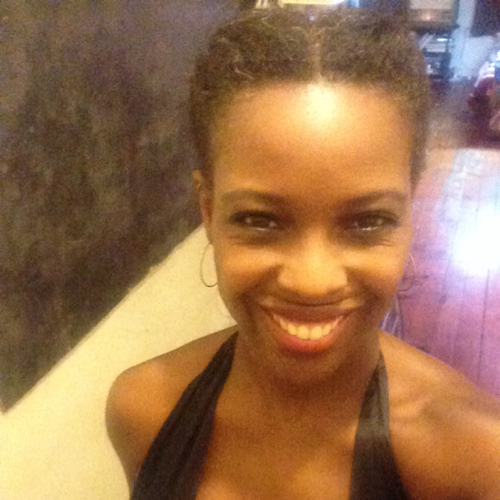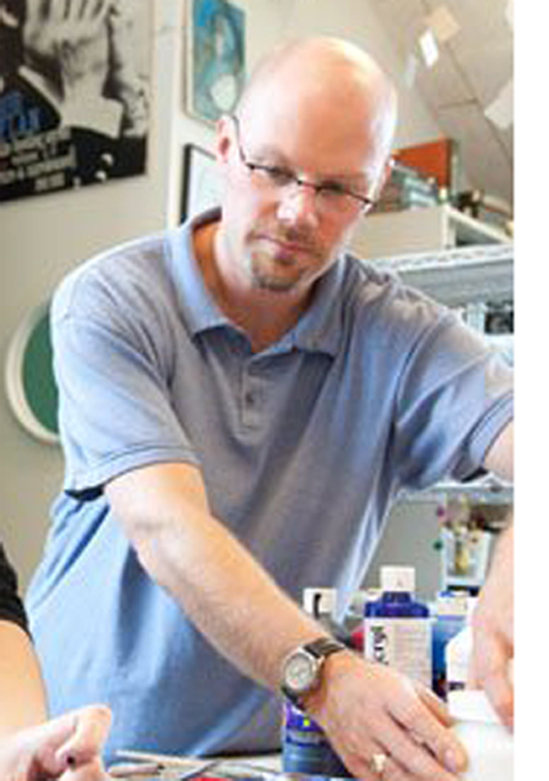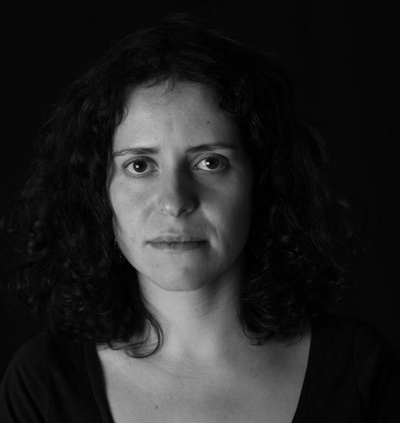In our third and final round of introductions to ART21 Educators, we’d like you to meet Stacey, Tammy, Ty, and Alisa, who teach in Canada, New York, Washington, and Massachusetts respectively. All four are bringing a passion and enthusiasm for contemporary art in the classroom to our revitalized ART21 Educators program, which kicks off next week with the Summer Institute!
 Stacey Abramson teaches art to high schoolers in Winnipeg, Manitoba. Even with six years of experience behind her, she still considers herself a “green” teacher, remarking “part of my job is to continuously learn.” Her students are constantly discovering themselves through their creations, and have even embarked on projects as ambitious as creating their very own Biennale. See what her students at Maples Collegiate are up to on Stacey’s Instagram.
Stacey Abramson teaches art to high schoolers in Winnipeg, Manitoba. Even with six years of experience behind her, she still considers herself a “green” teacher, remarking “part of my job is to continuously learn.” Her students are constantly discovering themselves through their creations, and have even embarked on projects as ambitious as creating their very own Biennale. See what her students at Maples Collegiate are up to on Stacey’s Instagram.
“Contemporary processes and ways of looking at the world are how I want my students to see the potentials within art making,” she said. “I believe that art class should be seen as a revolutionary place where students can experience the power and possibilities of art both in their creation of, and understanding of contemporary art.”
 Tammy Dunn works at Village Community School in Manhattan’s West Village, teaching all subjects to a class of twenty first and second graders. This fall, she’s entering her fifteenth year as a teacher, and her position as a general subject teacher uniquely allows her to blend contemporary art into social studies, history, and even language arts classes. Tammy has also just been named as her school’s Diversity Co-Coordinator because of her dedication to bringing contemporary art from diverse artists and backgrounds to her students.
Tammy Dunn works at Village Community School in Manhattan’s West Village, teaching all subjects to a class of twenty first and second graders. This fall, she’s entering her fifteenth year as a teacher, and her position as a general subject teacher uniquely allows her to blend contemporary art into social studies, history, and even language arts classes. Tammy has also just been named as her school’s Diversity Co-Coordinator because of her dedication to bringing contemporary art from diverse artists and backgrounds to her students.
“When young children have experiences with art at an early age, it fosters a lifelong love of art,” she said. “I find that social studies is a great way to create interdisciplinary connections for the children. Art can be a vehicle for exploring numbers, geometric shapes, animals, and places.”
 Ty Talbot teaches more than one hundred students each year at University Prep in Seattle, Washington. With twelve years of experience behind him, he teaches painting, drawing, sculpture, mixed media, and filmmaking to students with contemporary art in mind. His advanced studio classes operate like an MFA program, where students are given one-third to one-half of the course to explore and complete self-directed projects. See what Ty’s students are up to on his blog tyTeach.
Ty Talbot teaches more than one hundred students each year at University Prep in Seattle, Washington. With twelve years of experience behind him, he teaches painting, drawing, sculpture, mixed media, and filmmaking to students with contemporary art in mind. His advanced studio classes operate like an MFA program, where students are given one-third to one-half of the course to explore and complete self-directed projects. See what Ty’s students are up to on his blog tyTeach.
“For me, contemporary art is about taking a conceptual notion—the seed of an idea—and running with it as aggressively and deeply as possible,” he said. “Contemporary art has encouraged me to move beyond traditional pedagogical practices and put more agency into my students’ hands.”
 Alisa Rodny has been teaching studio art for six years, currently inspiring more than 200 students each year at Jeremiah E. Burke High School in Dorchester, Massachusetts. Also serving as an arts liaison for her school, she mentors new teachers on innovative classroom practices. Her connection to ART21 films runs deep: each of her studio classes includes a quarter-long project on an ART21 artist.
Alisa Rodny has been teaching studio art for six years, currently inspiring more than 200 students each year at Jeremiah E. Burke High School in Dorchester, Massachusetts. Also serving as an arts liaison for her school, she mentors new teachers on innovative classroom practices. Her connection to ART21 films runs deep: each of her studio classes includes a quarter-long project on an ART21 artist.
“While many of my students walk into my classroom believing that ‘artists’ are dead white men, they quickly learn that actual contemporary artists look like them, talk like them, struggle with the same issues as them, and aspire towards similar goals and ideas,” she said. “My basic assumption about each student that walks into my classroom is that they are already an artist.”




